Sensing aided OTFS channel estimation for massive MIMO systems
Shuaifeng Jiang1, and Ahmed Alkhateeb1
1Wireless Intelligence Lab, ASU
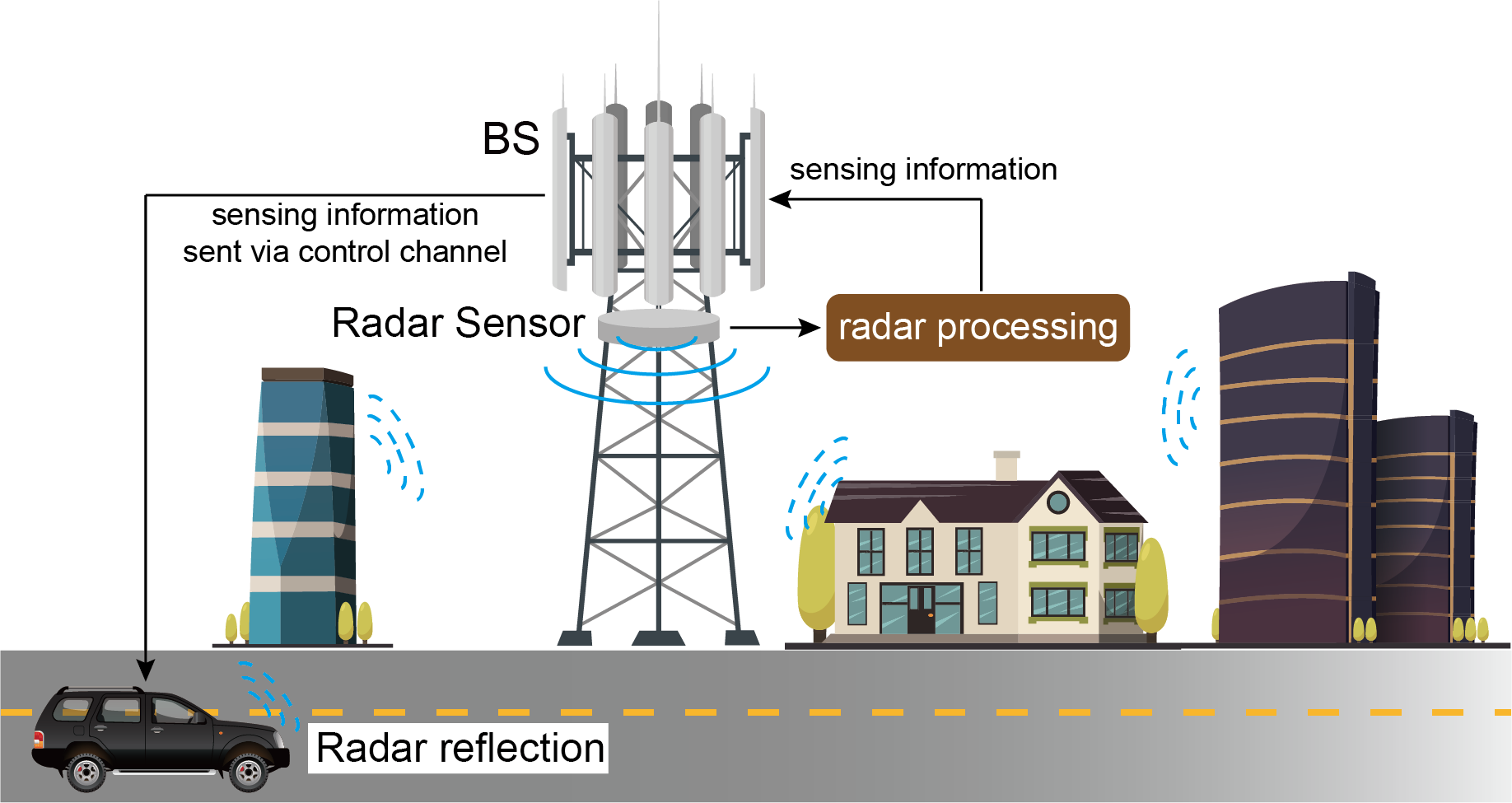
We propose to use radar sensing information to aid the channel estimation of MIMO OTFS system and reduce pilot overhead
Abstract
Orthogonal time frequency space (OTFS) modulation has the potential to enable robust communications in highlymobile scenarios. Estimating the channels for OTFS systems, however, is associated with high pilot signaling overhead that scales with the maximum delay and Doppler spreads. This becomes particularly challenging for massive MIMO systems where the overhead also scales with the number of antennas. An important observation however is that the delay, Doppler, and angle of departure/arrival information are directly related to the distance, velocity, and direction information of the mobile user and the various scatterers in the environment. With this motivation, we propose to leverage radar sensing to obtain this information about the mobile users and scatterers in the environment and leverage it to aid the OTFS channel estimation in massive MIMO systems. As one approach to realize this vision, this paper formulates the OTFS channel estimation problem in massive MIMO systems as a sparse recovery problem and utilizes the radar sensing information to determine the support (locations of the non-zero delay-Doppler taps). The proposed radar sensing aided sparse recovery algorithm is evaluated based on an accurate 3D raytracing framework with co-existing radar and communication data. The results show that the developed sensing-aided solution consistently outperforms the standard sparse recovery algorithms (that do not leverage radar sensing data) and leads to a significant reduction in the pilot overhead, which highlights a promising direction for OTFS based massive MIMO systems.# License and Referencing
Proposed Solution
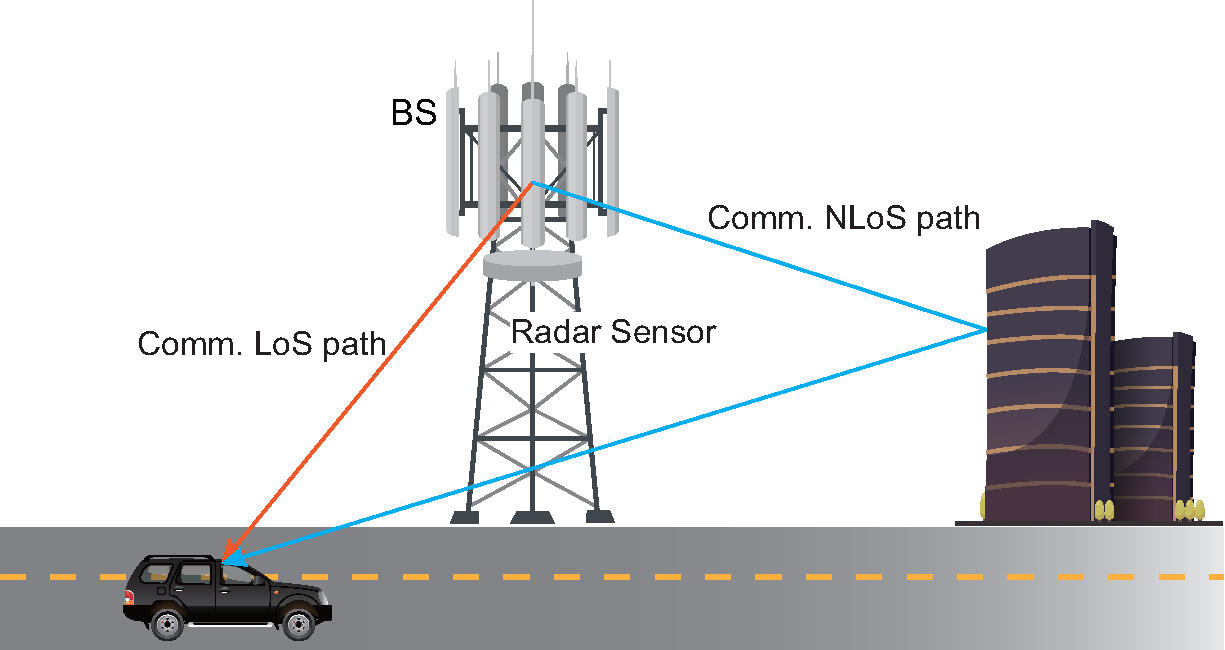
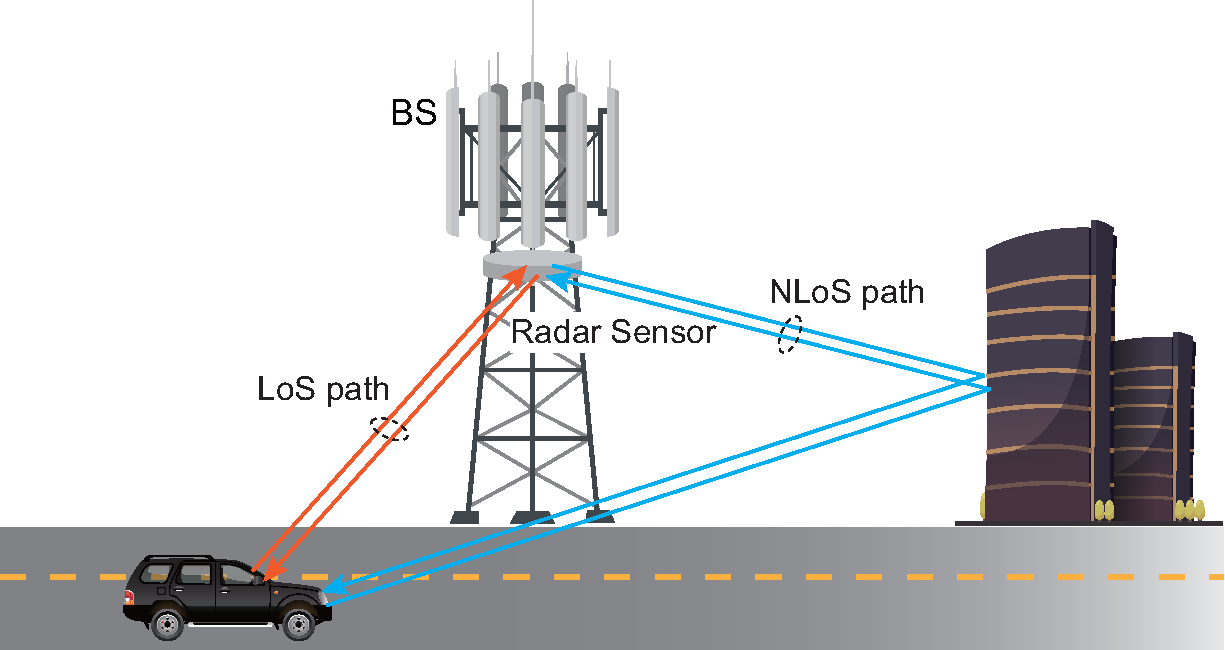
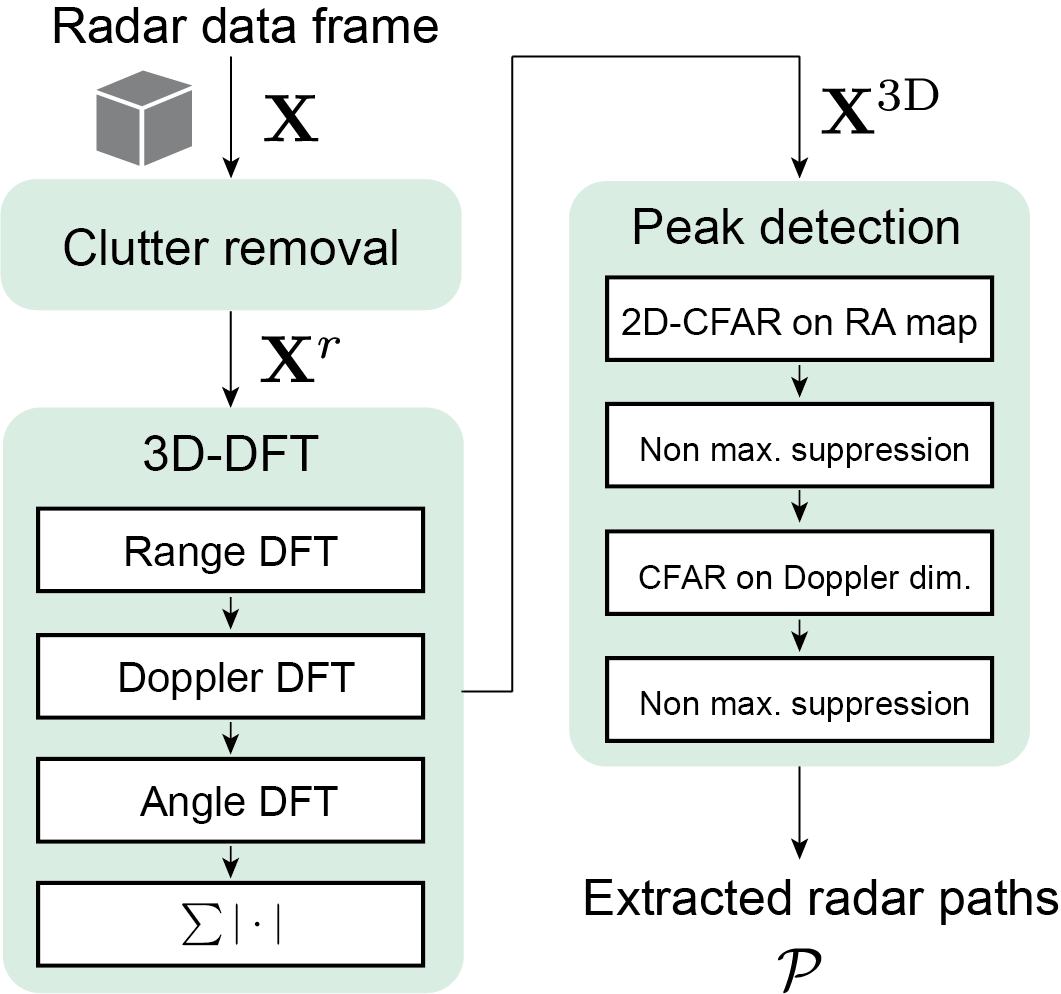
The figure on the left shows the correspondence between the communication and radar propagation paths.
This figure on the right shows the radar processing that applies clutter removal, 3D-DFT, and peak detection to extract the radar propagation paths. The extracted radar path information is then used to aid MIMO OTFS channel estimation.
DeepSense 6G Dataset
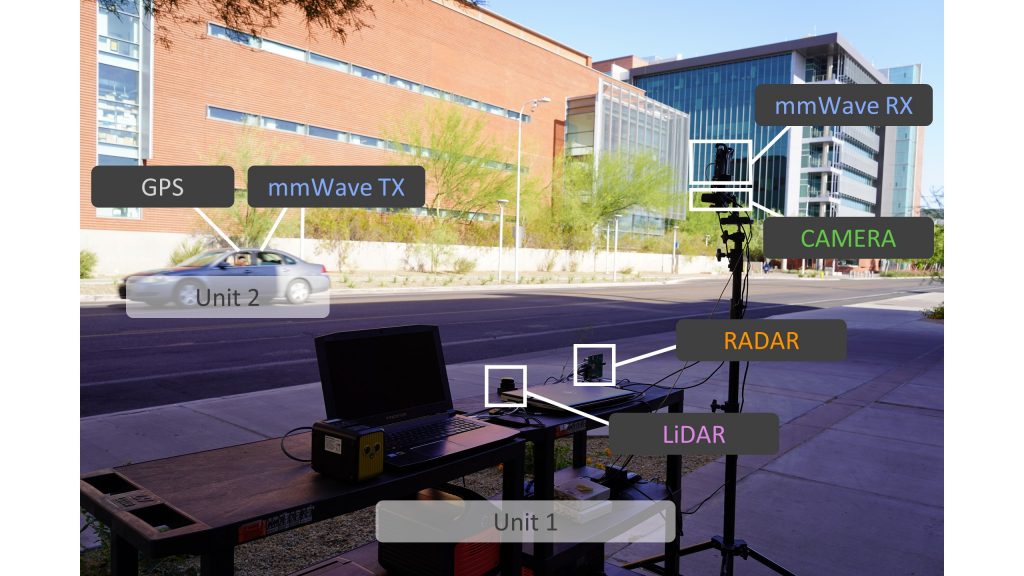
DeepSense 6G is a real-world multi-modal dataset that comprises coexisting multi-modal sensing and communication data, such as mmWave wireless communication, Camera, GPS data, LiDAR, and Radar, collected in realistic wireless environments. Link to the DeepSense 6G website is provided below.
Scenario
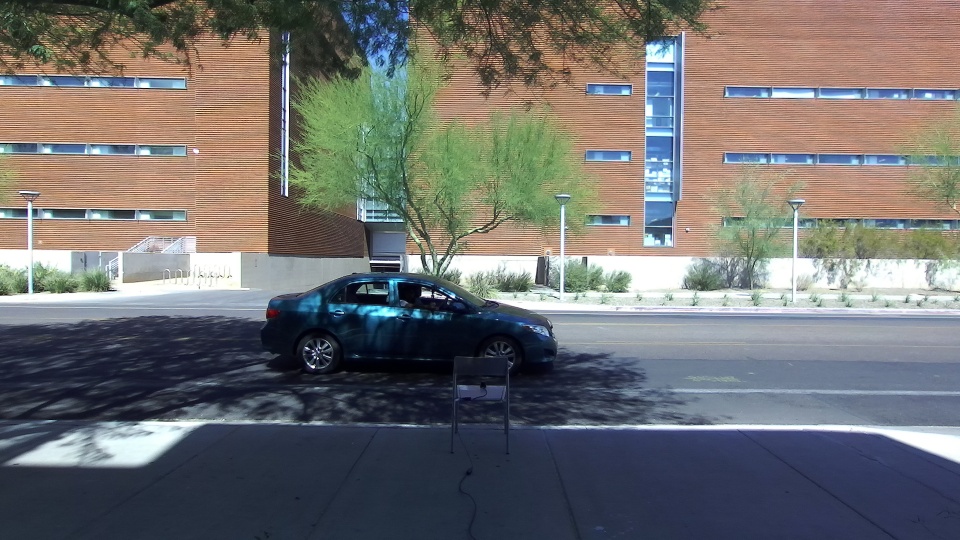
In this beam tracking task, we build development/challenge datasets based on the DeepSense data from scenario 8. For further details regarding the scenarios, follow the links provided below.
Citation
S. Jiang and A. Alkhateeb, “Sensing aided OTFS channel estimation for massive MIMO systems.” in IEEE ICC workshop, 2023.
@article{jiang2022sensing,
title={Sensing aided OTFS channel estimation for massive mimo systems},
author={Jiang, Shuaifeng and Alkhateeb, Ahmed},
journal={arXiv preprint arXiv:2209.11321},
year={2022}}

